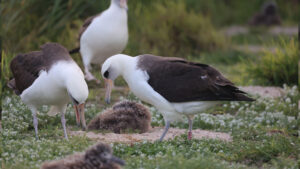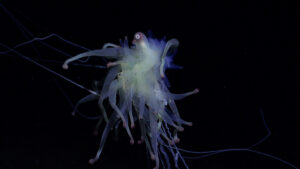Russian scientists have uncovered a previously unknown species of extinct bison in the Siberian permafrost. The bison is so well-preserved that they think they might be able to clone the animal.
Perfectly preserved for 8,000 years
The specimen is not complete, but the permafrost has superbly maintained the head, forelimbs, and part of its chest. During the autopsy, scientists took tissue samples and removed the bison’s brain.

Photo: NEFU
The almost perfectly preserved animal was found in the Khaastaakh locality of Russia. Initial analysis shows that the bison was between one and two years old when it died, but researchers are unsure exactly how long ago it lived. Similarities to other specimens unearthed in 2010 have led them to believe it is between 8,000 and 9,000 years ago. Radiocarbon studies of the samples should provide more information.
Could scientists clone it?
There are two ways that scientists might attempt the cloning process. The first is to recover completely intact chromosomes from the bison, but this is incredibly difficult.
Paleontologist Love Galen told Live Science, “It is more likely that you can flip a coin and get heads a thousand times in a row than it is to find intact chromosomes from a specimen that is thousands of years old.”
The main problem with the chromosome method is the age of the sample. In 2022, scientists made a breakthrough when they cloned mice from frozen cells. However, the mice cells were less than nine months old and past that point, the process was impossible.

Photo: NEFU
The second cloning method is also incredibly tricky, though more straightforward than finding a chromosome. Researchers would need to sequence as much of the bison’s genome as possible and fill in the gaps with DNA from a living species of bison.
Good reason for skepticism
Though the Russian team hopes that cloning is possible, other experts are skeptical. That skepticism seems well-founded. One of the scientists working with the Russian team is Hwang Woo Suk. In 2005, he published a paper claiming to have cloned human embryos and extracted stem cells from them. A year later his claims were proved false. Woo Suk had fudged the data and violated medical ethics to collect the human egg cells. He only narrowly escaped jail time.
Additionally, the same Russian research team recently claimed they had discovered a 22,000-year-old cave bear in the permafrost. It later turned out to be a 3,500-year-old brown bear.

Photo: NEFU
Over the last few years, there has been a flurry of grand claims about resurrecting extinct animals. An Australian team wants to resurrect the Tasmanian tiger. A biotech company has said that they will bring back the woolly mammoth by 2027 and then plan to work on the dodo.
So far, no extinct animal projects have proven successful. The closest to success might be the Pyrenean ibex. Using frozen cells, a team successfully produced a calf, but it only survived for a few minutes because of major lung problems.






